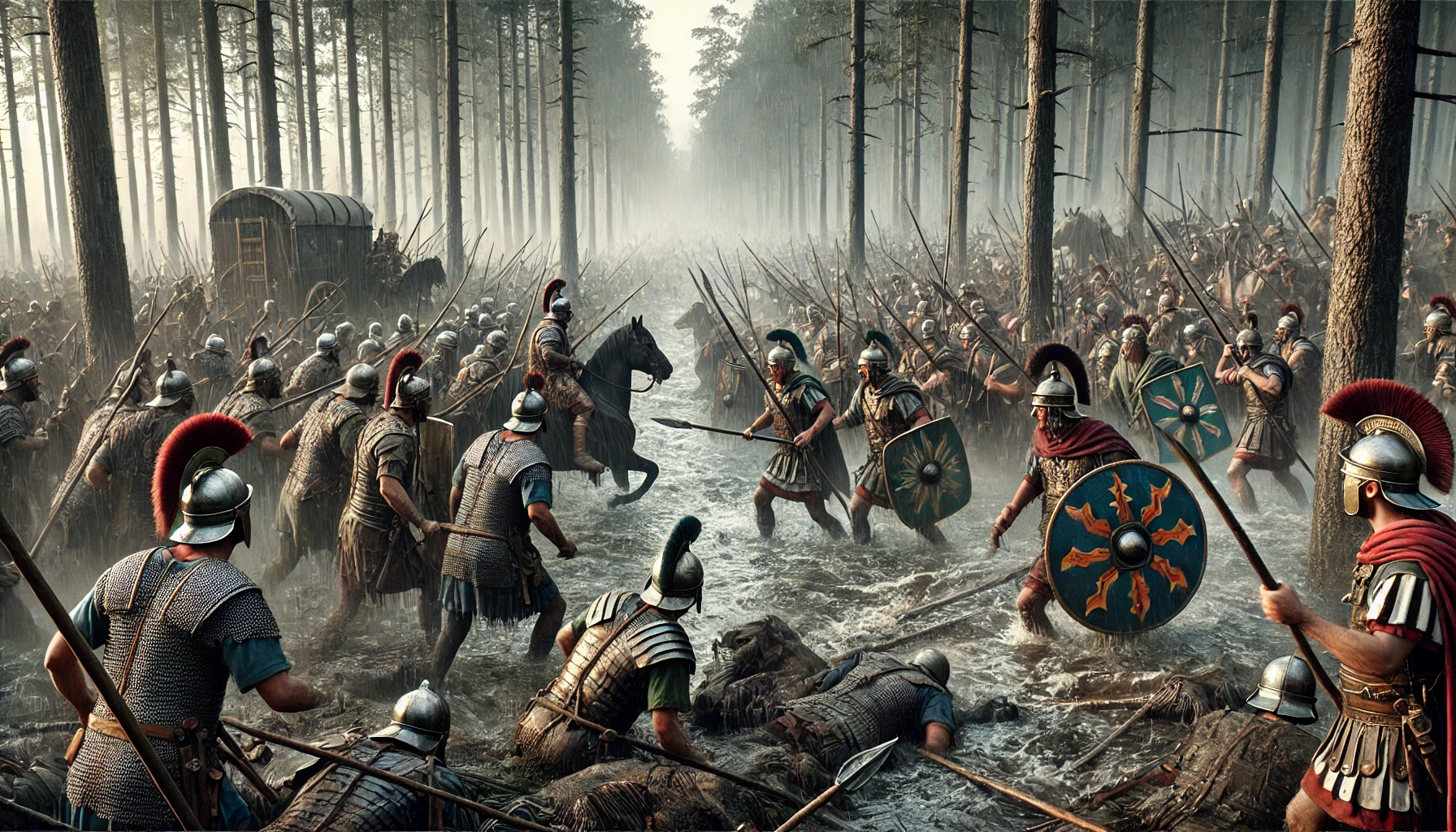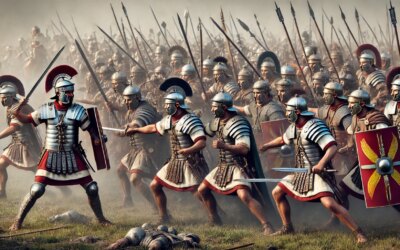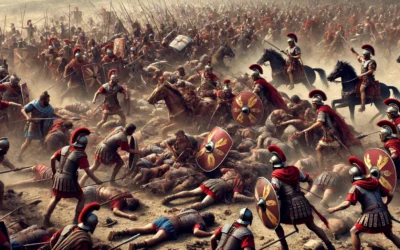A week of rain, pine, and ruin
In the late summer of 9 AD, a Roman marching column snaked through wet forest and boggy ground somewhere east of the Rhine. At its head rode Publius Quinctilius Varus, a seasoned governor who believed Germania had been pacified. Hidden in the timberline above him waited Arminius, a Roman-trained cavalry commander of the Cherusci who had spent months weaving a tribal coalition. Over the next four days, an ambush would grow into an annihilation—the Teutoburg Forest Disaster—that killed nearly twenty thousand Romans and reset the map of empire. :contentReference[oaicite:0]{index=0}
How Rome walked into a trap
Rome’s advance into Germania had accelerated under Augustus. Roads, forts, and winter camps tied the frontier to the interior, and the army pushed east toward the Elbe. Yet beneath the surface, resentment simmered. Varus governed as if the tribes were already subjects, imposing legal and fiscal routines that Cassius Dio says felt like chains. Arminius, outwardly a loyal auxiliary officer, quietly brokered an anti‑Roman alliance and lured Varus onto a “shorter” return route through rough country—perfect for an ambush, disastrous for an army stretched in a long column with baggage, families, and draft animals. :contentReference[oaicite:1]{index=1}
Four days in the forest
Day 1–2: the column buckles
According to the most detailed ancient narrative—Cassius Dio—the fighting opened as the Romans tried to force a narrow pass between rising ground and marsh. A squall turned the track to muck, shields grew heavy, formation collapsed, and the column shattered into clumps. The tribesmen erupted from the treeline behind rough fieldworks, javelins and arrows plunging into the packed road below. Surprised and strung out, Varus’s men could neither form a proper battle line nor bring their artillery to bear. :contentReference[oaicite:2]{index=2}
Day 3: chaos on open ground
Some survivors fought clear to camp on a hill, but the next day’s move dissolved into another ambush as cavalry and infantry collided in confusion. More tribes joined Arminius as news of the Roman collapse spread. :contentReference[oaicite:3]{index=3}
Day 4: the legions die
On the fourth day, rain and wind punished exhausted men edging along the Ems valley. Realizing the rout was terminal, Varus and senior officers fell on their swords; the rest scattered, surrendered, or were cut down. Three eagles were seized, and with them the souls of three legions. Rome had been routed in the trees. :contentReference[oaicite:4]{index=4}
The legions that vanished: XVII, XVIII, XIX
The disaster swallowed three Augustan formations—Legio XVII, XVIII, XIX—along with auxiliaries and cavalry squadrons. Rome treated the loss as a wound that must never scab over: the legion numbers themselves were never reused, a rare erasure in the army’s bookkeeping that advertised trauma more than prudence. :contentReference[oaicite:5]{index=5}
“Varus, give me back my legions”
When news reached the Palatine, Augustus tore his clothes. Dio’s portrait of the old emperor—“Quintili Vare, legiones redde!”—has the ring of theater, but the policy that followed was real: emergency levies, garrisons braced, and vigilant policing of German and Gallic bodies in Rome. Festivals paused; panic ebbed only when reports confirmed the Rhine line still held. Rome’s frontier policy toward Germania hardened. :contentReference[oaicite:6]{index=6}
Why Teutoburg mattered on the map
Ancient and modern writers agree on the strategic consequence. The Teutoburg Forest Disaster (9 AD) did not merely cost men and standards; it ended the Augustan project of permanent occupation east of the Rhine. For the next generation, Rome retaliated hard but stopped short of lasting annexation. The great river became not just a line of defense, but a line of definition. :contentReference[oaicite:7]{index=7}
Germanicus crosses back: revenge, burials, and eagles
Beginning in AD 14, Germanicus led punitive expeditions beyond the Rhine, beating Arminius in open battles like Idistaviso and the Angrivarian Wall and recovering two of the three lost standards. In a bleak ritual recorded by Tacitus, he marched his troops across the old killing fields to bury heaps of whitening bones—six years after the massacre. An honorific arch near the Temple of Saturn in Rome celebrated the recovery of the Varian standards under Germanicus’ command and Tiberius’ auspices. The final missing eagle likely returned only in Claudius’ reign decades later. :contentReference[oaicite:8]{index=8}
Arminius: Rome’s student turned nemesis
The Cheruscan who engineered the ambush had worn Roman armor before he wore a Germanic crown. Raised as a diplomatic hostage, Arminius earned Roman citizenship and command in the auxilia. His betrayal—so galling to Roman authors—was a lesson in the limits of cultural capture. Arminius won the most famous Germanic victory of antiquity and died at home, assassinated by rivals in AD 19. :contentReference[oaicite:9]{index=9}
Where exactly was Teutoburg? The Kalkriese debate
For decades, Kalkriese in Lower Saxony has been the leading candidate. Excavations have yielded Roman coins (including Augustan aurei), military kit, baggage‑train fittings, and even items belonging to named cohorts, all clustering along a bottleneck between a slope and former bog—terrain that matches classical descriptions. Not all scholars are convinced that every observed earthwork belongs to the battle, and recent geoarchaeological work has challenged specific features once tied to Roman or Germanic fortifications; even so, the concentration of early first‑century finds continues to support the area’s centrality to the disaster. The science is still testing the story—appropriately so for a battlefield that sprawled across days and kilometers. :contentReference[oaicite:10]{index}
What Romans learned the hard way
The Teutoburg Forest Disaster (9 AD) was a masterclass in how not to move an army through hostile woodland. Varus marched heavy and linear, escorting wagons on a road that was no road at all. The weather neutralized Roman kit; the treeline neutralized discipline; the ground neutralized cavalry. Tactical flexibility—Rome’s usual edge—mattered less than terrain. Arminius didn’t out‑invent the Romans; he out‑framed them, choosing where and when a supposedly pacified province would become a killing ground. :contentReference[oaicite:11]{index}
Myths, memory, and misuse
Nineteenth‑century nationalism recast Arminius as “Hermann,” the liberator of Germany, and twentieth‑century extremists abused the story to flatter racial myths. Contemporary historians push back: the battle was a tribal coalition’s win against an empire, not a nation‑state’s birth certificate. Archaeology—bits of mail, scattered coins, butchered bones—keeps the history granular and human. :contentReference[oaicite:12]{index}
A short timeline
- Autumn 9 AD: Varus ambushed over four days; Legio XVII, XVIII, XIX destroyed. :contentReference[oaicite:13]{index}
- AD 14–16: Germanicus campaigns east of the Rhine; two eagles recovered; funerary rites on the battlefield. :contentReference[oaicite:14]{index}
- AD 41 (prob.): Final eagle recovered under Claudius; Rome stages the victory of memory if not of conquest. :contentReference[oaicite:15]{index}
Not a conclusion—just the forest’s echo
Stand on a narrow path between a low ridge and a reedy wetland in northern Germany and it is easy to feel how a column can become a coffin. The Teutoburg Forest Disaster did not end Rome, but it did end a certain Roman confidence—that logistics, discipline, and will could always dictate terms. After 9 AD, the empire still looked across the river, but it looked differently. The pines had spoken.






